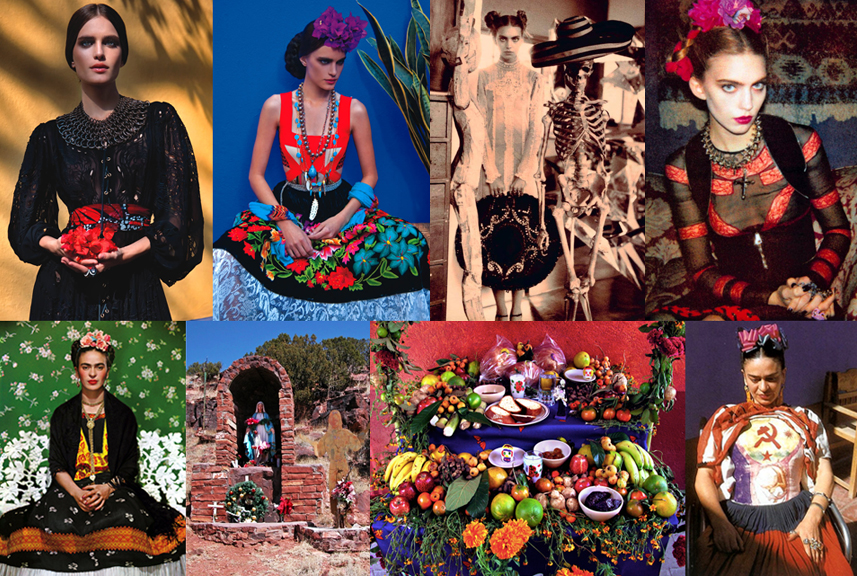Dark Romance
by Nivara Xaykao

Being from Texas, Mexican culture has always been a natural part of my visual vocabulary – one that I did not fully appreciate, much less notice, until I relocated to the urban environs of New York City (where one of the better, cheaper places to get enchiladas is Trader Joe’s). Now, Latin influences in general seem to be all around, notably on the biggest stage of all: the runway.
Naturally, Miuccia Prada kicked things off with her exuberant S/S 2011 collection peppered with banana prints, embroidered monkeys and striped sombreros. In recent seasons for Givenchy, the king of cool Riccardo Tisci has unveiled an edgier side to the inspiration, pairing tropical prints with images of the Virgin Mary and body jewelry with ornate mantilla laces. From the onset, there was something about the extravagant imagery that resonated deep within me, triggering memories of colorful quinceañeras, kitschy folk art shops in Austin and zipping through forgotten Texas towns.

Givenchy, Pre-Fall 2012; Temperley London, Spring 2012; Emilio Pucci, Spring 2012; Pleasure State; Damaris>
In assembling my big Valentine’s Day report for Stylesight, I kept on coming back to this Marie Claire Italia editorial shot by Wendy Bevan. Swishy full skirts, crafty folkloric details, surreal graphics and roses adorning the hair – who else but Frida Kahlo? It was a dark yet all-the-more-compelling side of romance I wanted to explore further. So I began to connect the dots, unearthing several evocative editorials – all done within the past year – until the trail of rose petals led me to recent collections from Alexander McQueen, Zac Posen, Pucci and Jason Wu.
The Spanish design identity is invariably tied to the Catholic tradition, from Cristóbal Balenciaga’s monastic volumes inspired by nun’s habits to Kahlo’s expressive paintings that recall lavish roadside shrines. It is an aesthetic that fully embraces contradictions: The Day of the Dead (Día de los Muertos) – the subject of much fascination lately – is an occasion that both honors the deceased and celebrates life. From the surrealism of artist Salvador Dali to the magical realism of writer Gabriel Garcia Marquez, it is a sensibility grounded in the earth and floating in the clouds.
In a world where the sacred exists alongside the profane and the austere with the ornate, what exactly does this mean for intimates? It’s over-the-top ornamentation with a side of humor, demure silhouettes studded with subversive details (a cutout here, a bondage-y strap there), and where the beauty and romance of blossoming flowers can be still be found in an endless field of black.

